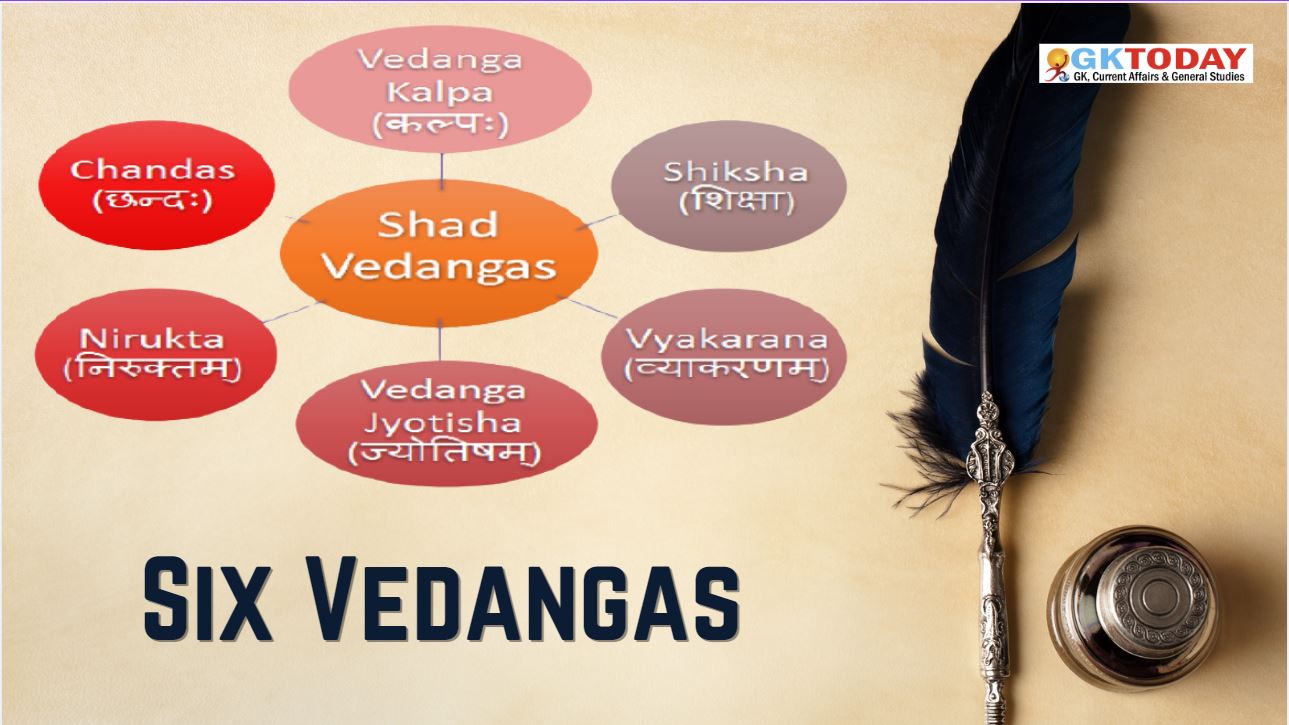Six Vedangas
Vedangas are six auxiliary disciplines associated with the study and understanding of the Vedas. They are as follows:
Shiksha (Phonetics)
Its aim is the teaching of the correct pronunciation of the Vedic hymns and mantras. The oldest phonetic textbooks are the Pratishakyas (prātiśākhya), describing pronunciation, intonation of Sanskrit, as well as the Sanskrit rules of sandhi (word combination), specific to individual schools or Shakhas of the Vedas.
Kalpa (Ritual Canon)
It contains the sacrificial practice and systematic sutras. There are three kinds of Sutras part of Kalpa:
- Śrautasūtras, which are based on the Shruti, and teach the performance of the great sacrifices, requiring three or five sacrificial fires
- Smartasūtras,or rules based on the Smriti or tradition. The Smartasūtras have two classes viz.
- Grhyasutras, or domestic rules: They are basically treating the rites of passage, such as marriage, birth, namegiving, etc., connected with simple offerings into the domestic fire.
- Dharmasutras or customs and social duties:The Dharmasūtras are the first four texts of the Dharmasastra tradition and they focus on the idea of dharma, the principal guide by which Hindus strive to live their lives. The Dharmasūtras are written in concise prose, leaving much up to the educated reader to interpret.The most important of these texts are the sutras of Āpastamba, Gautama, Baudhāyana, and Vasiṣṭha.
- The Dharmasūtras can be called the guidebooks of dharma as they contain the rules of conduct and rites as practiced in the Vedic schools. They discuss about the duties of people at different stages of life like studenthood, householdership, retirement and renunciation. These stages are also called āśramas. They also discuss about the rites and duties of kings, judicial matters, and even personal practices like the regulations in diet, offenses and expiations, daily oblations, and funerary practice.
Vyakaran (Grammar)
Vyakaran includes the Aṣṭādhyāyī, of Panini. Most of the work of very early Indian grammarians ranging to 8th century BC is lost. There are 4 parts of Panini’s Grammar:
- Śivasūtra: Contains phonology (notations for phonemes specified in 14 lines)
- Aṣṭadhyāyī: Contains morphology (construction rules for complexes)
- Dhātupāṭha:Contains list of roots (classes of verbal roots)
- Gaṇapāṭha: Contains list of classes of primitive nominal stems
Nirukta (explanation)
It is traditionally attributed to Yāska, an ancient Sanskrit grammarian. It deals with etymology, particularly of obscure words, especially those occurring in the Veda
Chhanda (Vedic meter)
It measures and divides Vedic Mantras by number of padas in a verse, which is called Padas. Number of padas divides each verse, hymn, or mantra and number of syllables divides each pada. There is a distinct taxonomy on this basis. For example a Gayatri Chhanda has 3 padas of 8 syllables containing 24 syllables in each stanza. Similarly, Anuṣṭup has 4 padas of 8 syllables containing 32 syllables in each stanza. Anustup is the typical shloka of classical Sanskrit poetry
Jyotisha (Astrology)
It describes rules for tracking the motions of the sun and the moon and the foundation of Vedic Jyotish.


